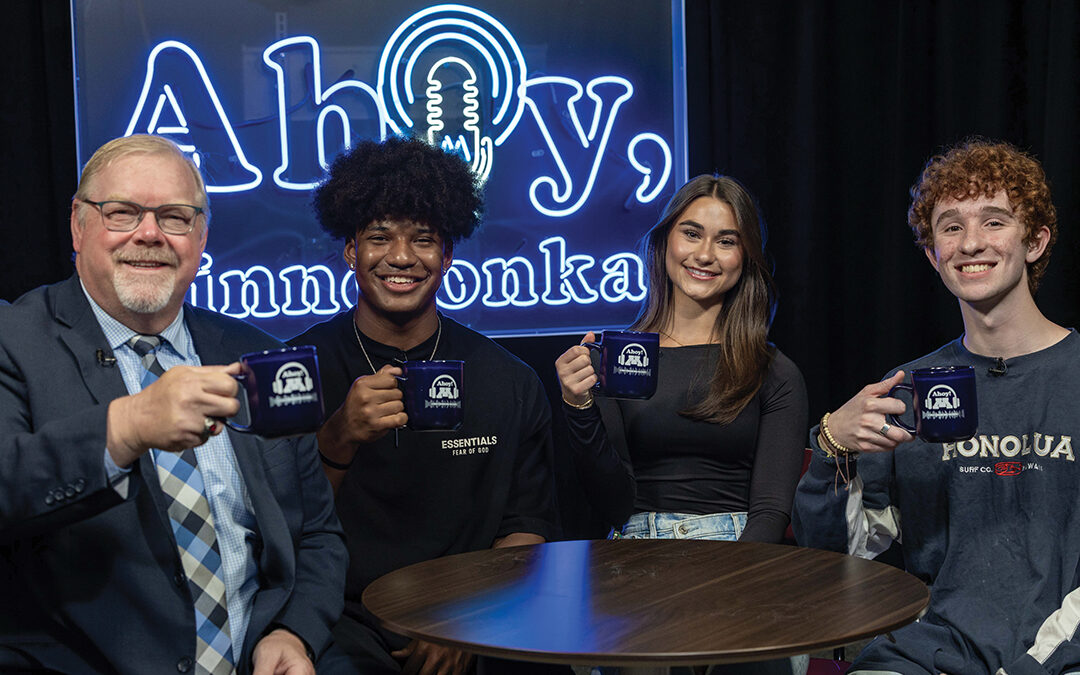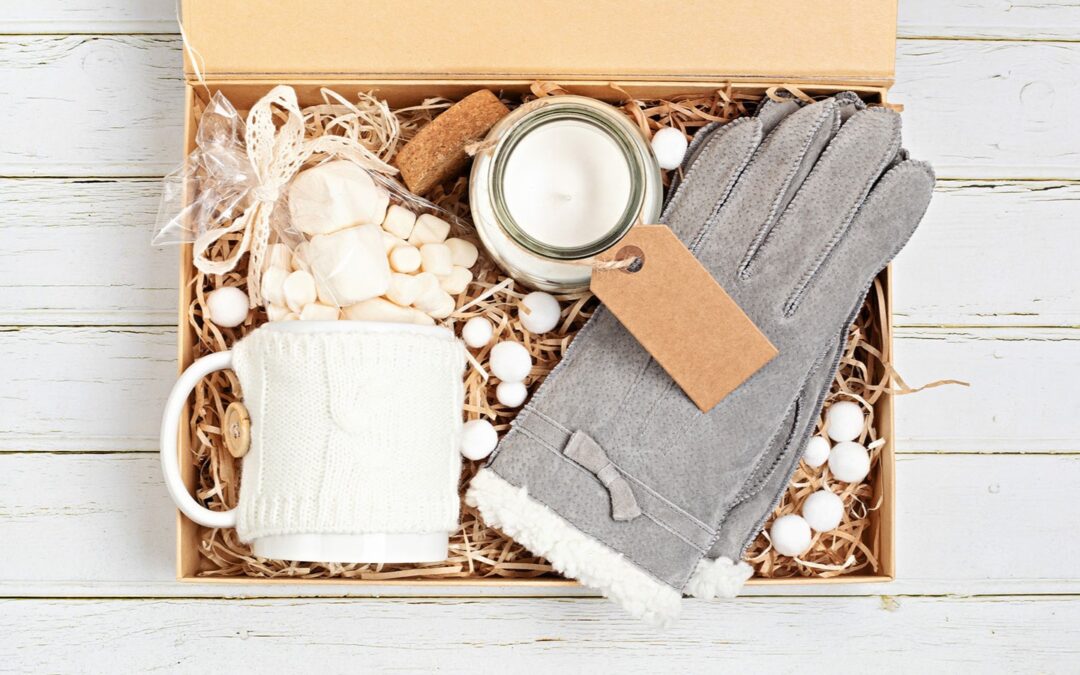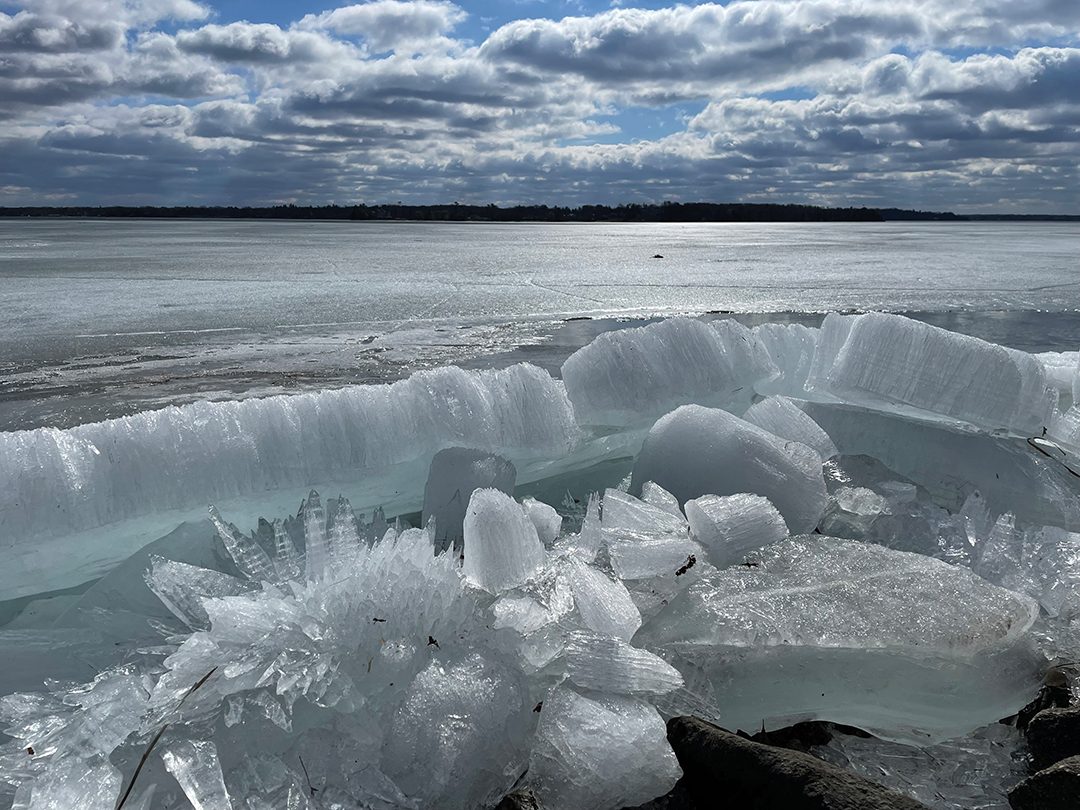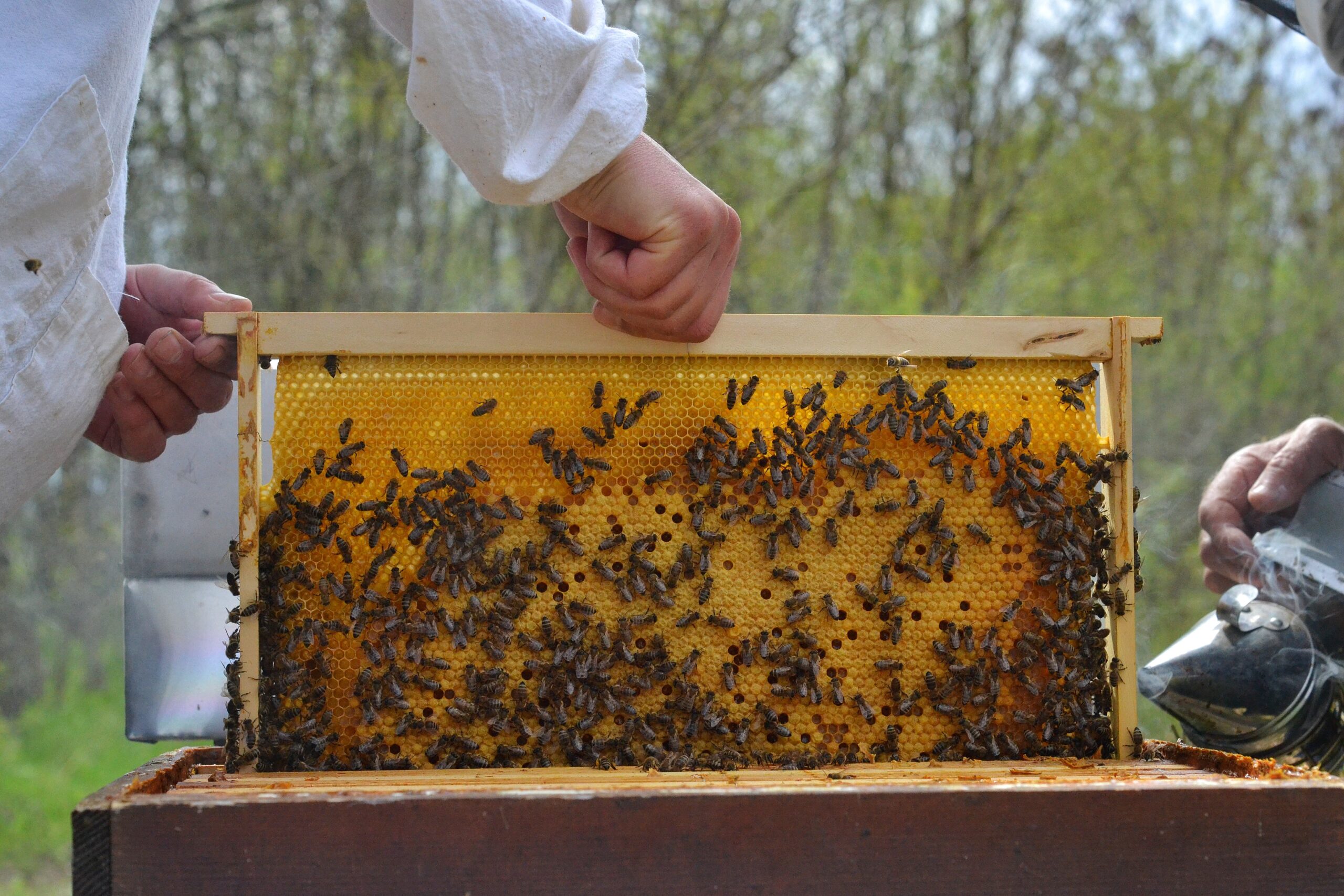
Pexels/Djordje Vezilic
Minnetonka Gold adds sweetness to life.
“It’s a labor of love. It’s a puzzle you can’t figure out. It’s cost-prohibitive, it’s a time drain and it’s frustrating, but it keeps you engaged.”
So says Jeff Dankey, local beekeeper and owner of the Minnetonka Gold honey company.Believe it or not, the beekeeping community is strong in our neck of the woods, and Minnesota is one of the top five states—along with Wisconsin, North Dakota, South Dakota and Montana—producing commercial honey.
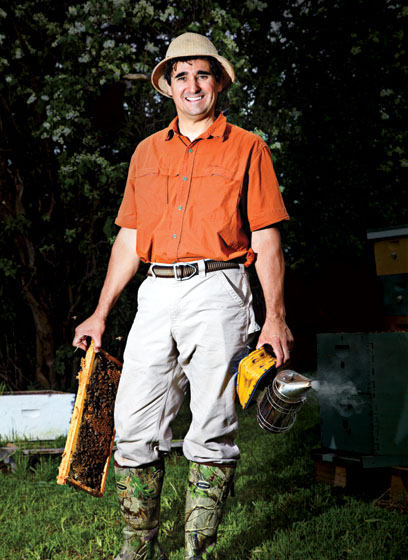
Jeff Dankey, a local beekeeper and the owner of Minnetonka Gold Honey Company. Photo: Tate Carlson
Minnetonka Gold honey is harvested from apiaries and prairies around Lake Minnetonka, while Dankey’s Buckwheat Buzz variety comes from central Minnesota, where hundreds of acres of buckwheat are harvested and exported to Japan each year. He describes its flavor as earthy and chocolatey. “It’s so pungent,” Dankey says, “it’s more for the male population than the female, though that conclusion is unscientific.” Both are lightly filtered to remove particles, but never heated above 110 degrees; raw honey purportedly has superior health benefits. Dankey started his enterprise five years ago. He now has 130 to 140 hives; by contrast, commercial honey producers maintain 2,000 to 5,000 hives.
An eye-catching honey exhibit at the Minnesota State Fair ignited his passion; he took home a brochure and got excited about beekeeping, which led to a University of Minnesota Extension class. He was impressed with the strong local beekeeping community—which is due, in part, to the great entomology department at the University of Minnesota and specifically to bee expert Marla Spivak. Bob Huttner, president of Minnesota Beekeepers, describes one of Spivak’s important bee research experiments. “She put 30 hives all over the country, and in two years, they were all dead. Her point was that you have to take care of bees. You have to treat them like a livestock animal; they can’t take care of themselves.”
Yet there is no single “proven method” of beekeeping; there are as many ways of keeping bees as there are beekeepers. “You keep fiddling with it, testing new products, finding new ways to treat mites,” a major problem for bees, Dankey says. “But if you don’t take care of your bees, they’re gone within two years. It’s not an easy hobby here.” Huttner agrees. “It’s getting harder and harder to keep bees,” he says. “[There are] new chemicals and no information. No one’s printed anything showing what we’re using. There are issues beyond just honeybees—we need [pollinators] in a lot of respects. You always saw bees and butterflies around when you were growing up. Think about it: You don’t see them anymore.”
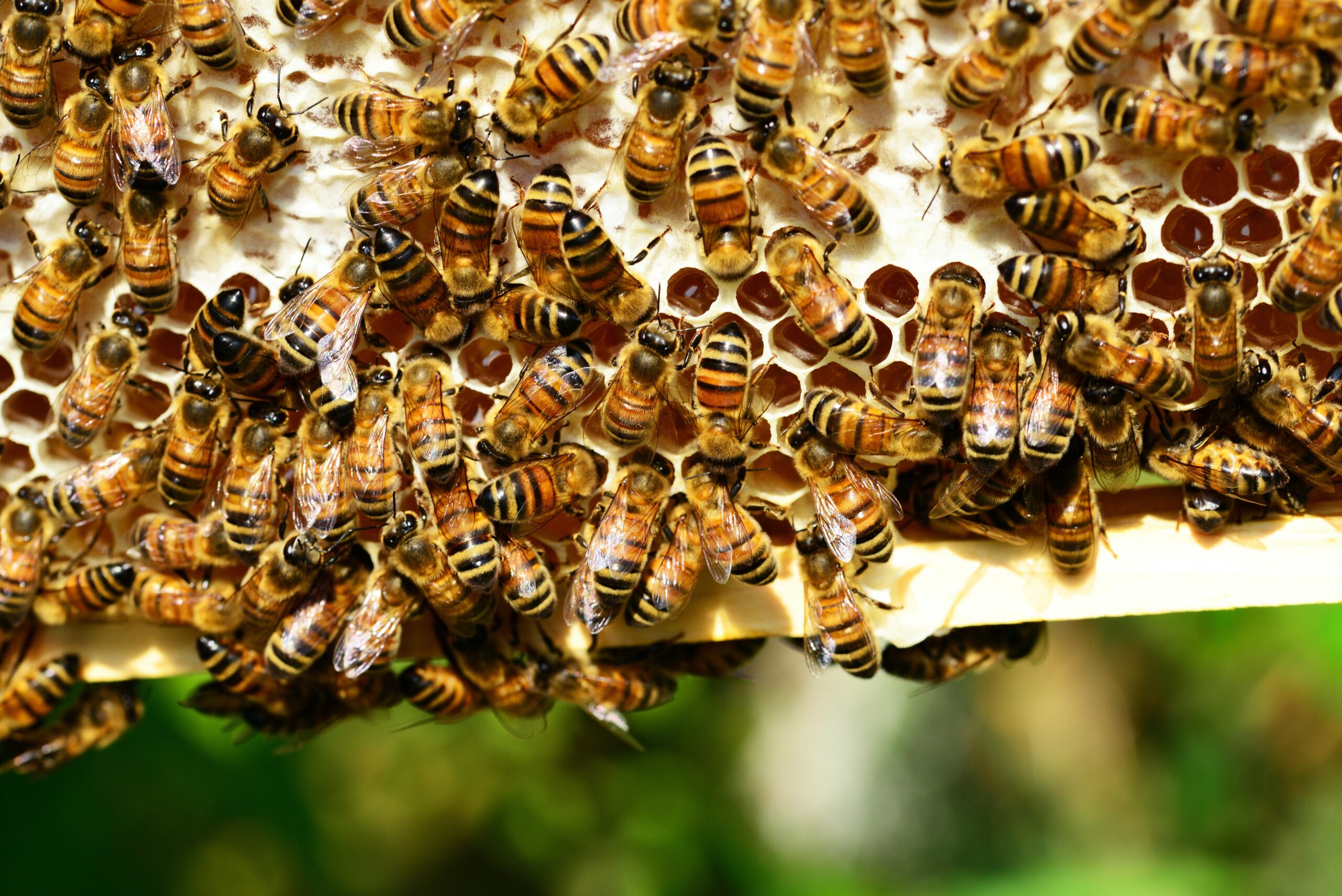
Pexels/Pixabay
Mites are a beekeeper’s prime nemesis; the arachnids are visible to the eye and live on the backs of bees, where they pass on viruses. Nutrition is also a grave problem for bees, since many wildflower fields are gone due to commercial and industrial development. High prices in soy and corn have forced farmers to plant single-crop fields, and the diminished biodiversity robs the bees of food sources. “We produce pure green lawns and don’t plant clover like we used to,” Huttner says. “If we don’t like it, we cut it, and [the bees] are left with what grows in ditches and on side roads, where we are trying to stop mowing and spraying,” Dankey adds.
Huttner is concerned about how environmental changes are affecting pollinators. “We’re injecting trees and shrubs and bushes with systemic chemicals that are really hurting the bees,” he says. Neo-nicotinoids are intended to kill Japanese beetles, but at the same time are poisoning the nectar of the tree’s flowers. “One-sixteenth of a dose renders the bees incapable of finding their way home; any more than that, and they keel over,” Huttner says. Local beekeeper Eric Rynders concurs. “It bothers me that chemicals are used,” he says. “Nicotinoids attack the nervous system of bees and affect their communication systems. These chemicals sit in the soil for five or six years.”
Dankey winters his bees; by late February to mid March, he will open his hives and see how many survived. He will collect the survivors, add new breeds and take it from there. He starts with strong heirloom breeds, like Russian, Italian and other “survivor stock” types. It’s an ongoing quest to find strains that are strong enough to weather the brutal season; bees are not a native species to North America but were brought on boats from European with routes in Asia. Dankey’s ultimate goal is to promote a Minnesota-hardy bee.
According to Huttner, commercial mass-produced honey has been heated and filtered so it doesn’t crystallize on the shelf. At more than 140 degrees, the heat destroys beneficial enzymes and pollen. Some imports from China can legally be declared honey if they contain 51 percent honey; the rest consists of rice syrup. “All the big food producers use it,” Huttner says. “It’s cheaper and it tastes something like honey.”
Check the label’s country of origin and make sure it’s stamped “raw” before you buy a jar of honey. More and more honey makers are exploring “micro process” honey, producing varieties that are region- and apiary-specific. Single-source varieties, such as dandelion, alfalfa or basswood, exhibit subtle nuances in flavor. Much like wine, micro-harvesting captures the so-called “terroir” of the blossoms that provided the nectar.
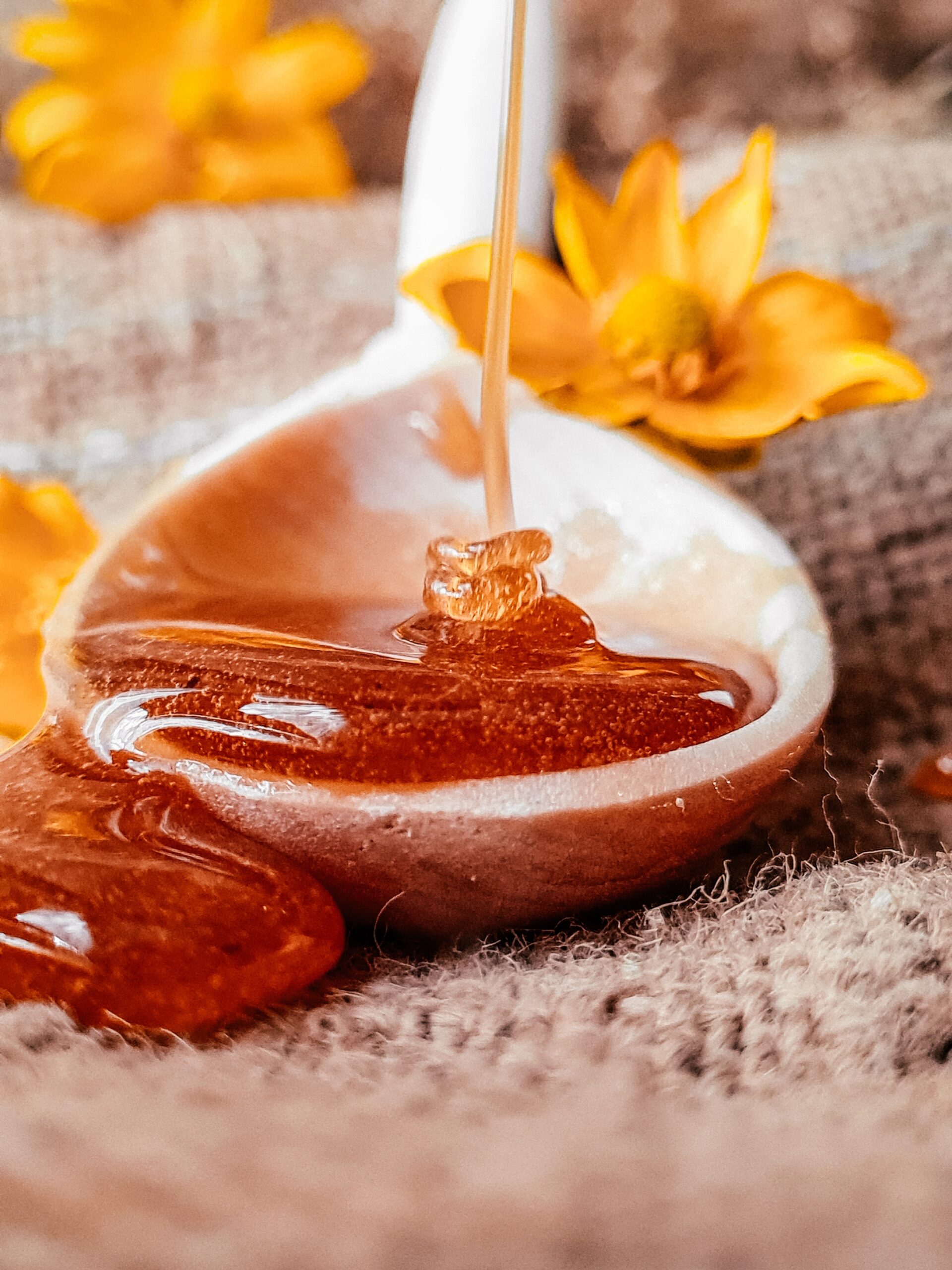
Pexels/Yulia Ilina
Huttner has been keeping bees for 4 years; like Dankey, he was inspired by a beekeeping and honey exhibition at a local garden show. “I told my wife we were going to have bees, and she started laughing,” he says. “But she’s not anymore. [We found that] life without bees is pretty flat.”
Although Rynders and his colleagues paint a bleak picture of honey making and the future of bee keeping, they all agree the effort is worth it. “It’s never boring,” Rynders insists. “I can sit in front of a hive for hours and watch them come and go. Also, when you stand in front of a hive, people won’t bother you.” Dankey engages his whole family in the production of Minnetonka Gold, particularly his 3-year-old twins. “They like to help me label, put on lids and hand me bottles,” he says. “And of course there is always product sampling when you bottle!” Find more about Minnetonka Gold honey at minnetonkagold.com.
Where to Find Minnetonka Gold and Buckwheat Buzz
Lakewinds Natural Food markets, Minnetonka and Chanhassen lakewinds.com Harvest Moon, Long Lake harvestmoon.coop
Keep Bees and Make Your Own Honey
- Do your research and read beekeeping books
- Visit the beekeeping and honey making booth at the Minnesota State Fair
- Attend the two-day class offered by Marla Spivak at the University of Minnesota
Health Benefits of Honey
- Provides a natural alternative to cough syrup; antimicrobial, anti-fungal, antibiotic, high in potassium and iron.
- Works as an allergy fighter; eating the small amount of pollen in honey helps the body build resistance.
- Helps with gastrointestinal disorders and ulcers, particularly Manuka honey from New Zealand.
- Stabilizes glycogen levels and improves recovery time for athletes.
- Makes a moisturizing facial mask, and reduces redness and acne.
- Heals moderate burns faster than traditional methods.

